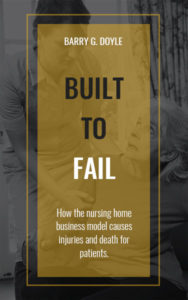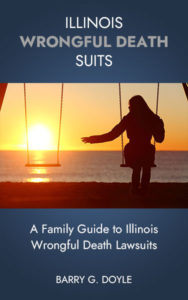IDPH has cited and fined Ascension Nazarethville Place nursing home in Des Plaines after a resident there sustained a fractured leg as a result of an unsafe transfer.
Nursing homes are required to periodically complete a document called the Minimum Data Set (MDS) which spells out the level of care that a resident requires. This document forms part of the basis by which the the nursing home is reimbursed for the care that it provides, so it is signed under penalties of perjury by the people completing it.
The results of the MDS may trigger a process known as the Care Area Assessment (or CAA) which is an indicator to the nursing staff that it should be considering care planning for the various areas where the MDS triggers the CAA. The net result of this is that there should be some congruency between what is shown as the resident care plan and the resident’s documented care needs on the MDS.
The resident here was coded on the MDS as requiring two-person physical assist with transfers. However, the resident care plan did not provide any instruction to staff as to how the transfers should be accomplished. A properly completed care plan would have included instructions for two-person physical assist with transfers and use of a gait belt.
On the day of this nursing home fall, the resident was being transferred from her wheelchair to bed. A single aide was involved in attempting the transfer. The resident asked for a second staff member to help with the transfer because she was nothing but dead weight, but the aide said that she was in a hurry and did not have much time and that she would be able to complete the transfer on her own.
Rather than use a gait belt, she held the resident under her arms and attempted to lift her from wheelchair to bed. As the resident predicted, she proved to be “dead weight” during the transfer and depending on who you are asking, she was either “lowered safely to the floor” (per the aide) or “dropped” (per the resident). Regardless, the resident sustained a fracture of the thigh bone just above her prosthetic knee which required surgical repair. She now requires transfers to be accomplished by way of a mechanical lift.
There are a number of shortcomings with the care that this resident received:
- The MDS showed that she required a two-person assist with transfers but a) that was not incorporated in the care plan and b) was not provided to her when the fall occurred.
- No gait belt was used for the transfer so it was next to impossible for the aide to perform any kind of transfer properly, leading to the resident being dropped (and given the kind of injury sustained, a controlled lowering to the floor is an unlikely scenario). Purportedly there was only a single gait belt for each floor rather than one for each staff member.
- The aide ignored the resident request to have two staff help with the transfer because the aide was in a hurry.
All of the above are the most immediate causes of this nursing home fall, but the fact that shortcuts were taken in the care of the resident which sacrificed resident safety is a hallmark of an understaffed nursing home. The fact that the aide was not trained how to do proper transfers and that each aide did not have a gait belt (a necessary piece of equipment) speaks to a lack of investment in the staff and facility which is also a management issue. One of our core beliefs is that nursing homes are built to fail due to the business model they follow and that unnecessary accidental injuries and wrongful deaths of nursing home residents are the inevitable result. Order our FREE report, Built to Fail, to learn more about why. Our experienced Chicago nursing home lawyers are ready to help you understand what happened, why, and what your rights are. Contact us to get the help you need.
Other blog posts of interest:
Symphony of Buffalo Grove resident suffers catastrophic injuries in fall from lift
Grove of St. Charles resident suffers fractured hip after being rolled from bed
Glenview Terrace resident suffers multiple fractures when lift topples over during transfer
Resident breaks hip in unsafe transfer at the Pearl of Rolling Meadows
Failure to use gait belt results in fall and fractured knee at Friendship Village in Schaumburg
Grove of Skokie resident breaks leg due to violation of care plan
Click here to file a complaint about a nursing home with the Illinois Department of Public Health.


